Beautiful, blissed-out, bohemian: this 20km-long island a short ferry ride from Auckland lures artists, wine-lovers, foodies and free spirits
Property prices may have soared but they haven’t paved paradise. The 8,000 permanent residents are united by their love of the good life, along with gorgeous views, glorious beaches and Waiheke’s blissed-out bohemian vibe.
A Māori name for this place is Motu-Wai-Heke, which means “island of trickling water”. And it’s true there’s plenty of water. But what strikes me more is the abundance of coves. Exploring the island, we leave one stunning bay behind, climb a hill then gasp as another view of the bright turquoise ocean opens up in an entirely unexpected direction (we gasp a lot on Waiheke). Its many peninsulas resemble the tentacles of a giant green octopus emerging from the sea to bask in the warm, dry microclimate of the Hauraki Gulf.
In many ways Waiheke is a microcosm of New Zealand itself – blessed by nature, serving up seriously good food and wine, and populated by happy, welcoming people who are so laid-back they laugh at Australians for being uptight. The weather is milder though. Summer, with an average maximum daily temperature of 29C, is peak season on the island but winter is relatively warm, with highs of 19C dropping to 9C overnight.
If you’ve flown a long way, Waiheke is a good place to ride out jet lag before embarking on a tour of the country. Here’s how to spend 48 hours unwinding here.
There are buses on the island and tramping trails abound, but for ease of getting around hire bikes, scooters or a car.
Day one
5pm: settle in, kick back
There are so many views on Waiheke you’d be pushed to find a room without a pleasing one. Relax and enjoy. Open a bottle, or just breathe out.
Among the scores of hotels, apartments and holiday homes, the top-rated resort on TripAdvisor is Delamore Lodge, boasting one of those died-and-gone-to-heaven infinity pools on a ridge not far from the biggest village, Oneroa. If you like to be “in town”, the Oyster Inn offers a glam beachy vibe. A budget option near the island’s one supermarket is Starfish on the Bay, a charmingly cluttered garden apartment with an outlook over Okahuiti creek and a resident overseer in the form of Napoleon, an elderly and affectionate siamese cat. Its whitewashed walls and bright blue cushions bring Santorini to the south Pacific.
My sister and I are staying at Marino Ridge, newly built by Peter and Caroline Davey on a private drive just up the road from Delamore Lodge. We’re in one of three suites with views overlooking Owhanake Bay.
It’s billed as “luxury hosted accommodation”, which we had feared might mean it was a B&B with pretensions. It’s nothing of the sort: think ultra-exclusive, super-friendly boutique hotel. The room fit-out is impeccable and yet we’re still in a home – one of those fabulous ones you glimpse from a road and wonder who lives there.
Clearly this pair are pros when it comes to hospitality. Over excellent wine and exquisite canapes we discover why. As a couple they worked on superyachts in Europe: Pete as the skipper and Caroline as steward and private cook. Marino Ridge is their “retirement” home, designed with the dream of welcoming their overseas friends. Rooms cost NZ$650 a night in the winter season, NZ$845 in summer.
The Daveys are warm, interested and interesting. As we all make a fuss of Marino’s two most pampered residents – standard poodles Isla and Fabio – they share their passion for Waiheke, telling us where to go and what to see; which restaurants are terrific. We feel as though we’re meeting for the first time a glamorous aunt and uncle (by the time we leave we’re hoping they’ll adopt us).
7pm: dinner at Cable Bay
Whatever you do on Waiheke, make sure you find somewhere to sit on the north-western side of the island, looking towards Auckland, in time to see the sun set behind the distant city. Cable Bay Vineyards is as fine a spot as any, offering breathtaking views from its two restaurants, the Dining Room and the Verandah. Both open on to a beanbag-dotted grassy slope overlooking the water.
The Verandah serves small bites, sharing plates and wood-fired pizzas. We opt for the fine-dining alternative of the Dining Room: the food is fab (we spend NZ$60 each on two courses) and the service fantastic. For dessert we share the milk and dark chocolate with malt caramel and smoked vanilla ice-cream. It’s a flavour bomb. We look at each other in awe.
Day two
9am: mobile massage
We’d requested avocado on toast for breakfast (Caroline discovered my sister likes olive oil and has three local varieties for us to try), so when we’re fed we put on robes and are led to a room where Karyn Sneddon of Anu-Spa and her colleague Cushla have set up massage tables. I can’t remember much of what follows but after an hour involving shea butter, sensory deprivation and hot stones – apparently it was Anu’s signature jet lag treatment with facial rehydration, priced at NZ$100 – I ask Karyn what style of massage she practises. “Whatever is needed!” is the reply.
10.30am: guided tour
A good way to get your bearings is to put yourself in the hands of a local guide for a private or small group tour. One of the first people we meet on the island is Michelle Clarke of Waiheke Bespoke Tours, who greets us with hugs and introduces herself as a “purveyor of unique experiences”. Her emphasis is on luxury with a choose-your-own-adventure spirit.
We hitch a ride with Jenny McDonald, a former midwife who has lived on the island since 1978. The name of her company, Ananda Tours, comes from a Sanskrit word meaning pleasure, bliss and happiness. (Can you spot a theme developing here?) Ananda has several tours to choose from, along with the option to design an individual itinerary.
Jenny takes us to the huge Church Bay home and studio of painter Gabriella Lewenz. Born in Greece to American parents, Gabriella lived in Pakistan and the States before settling with her family on the island in 1997 in search of a simpler life.
In a light-filled space smelling of pine and turpentine, she shows us her abstract oil-based works and outlines her plans to offer an “artstay”. For a minimum NZ$2,000 spend, visitors can commission a painting then unwind in her guesthouse for at least a week at no extra charge while she creates a show-stopping souvenir for them to take home.
Stop two is Peacock Sky in Onetangi, near the centre of the island. We meet the vineyard’s top dog Sky, a border collie. Waihekeans clearly love their pets: all the dishes at Peacock Sky’s restaurant are named after dog breeds. We stay in the tasting room but there’s food on offer. Owners Connie (Canadian) and Rob (British) offer cellar-door food pairing, matching their wines with bite-sized morsels. We sample chardonnay with an Indian-spiced meatball; dry rosé with salmon and sweet chilli; a smooth, peppery merlot malbec with a pork sausage; and a berrytastic cab sav that turns a dark chocolate brownie into blackforest gateau. It’s inspired, revelatory – there should be far more of it.
Next we next pull into Rangihoua Estate to taste award-winning olive oils. First planted in 1996, the property now has more than 1,000 trees producing Greek-style Koroneiki, Spanish-style Picual and Tuscan-style Frantoio fruit. Cue more sampling and sighing noises. We also discover Waiheke Herb Spread, a green blast of goodness containing, among other things, nasturtium, dandelion, thyme, sage and lavender.
1pm: lunch at Stonyridge
On the way to our fourth and final stop we pass a small reserve with a tree full of chickens. “Oh, that’s roosters’ retreat,” Jenny says. She explains that after an elderly islander died, the council moved his noisy birds there from a residential area. Other residents started dumping their roosters as well. Dozens of birds are now cared for by the community, their numbers swelled by opportunistic ducks. When it rains they shelter in the bus stop.
For lunch we pull up at one of New Zealand’s most acclaimed vineyards, Stonyridge. The first Bordeaux varieties and olive trees were planted here in 1982 by Stephen White, a former round-the-world yachtsman whose sideline is teaching yoga.
We take seats in the Veranda Cafe and attack a platter of cold cuts, cheeses and antipasti. We also check out the photographs of famous visitors: it’s clear that most of the big-name performers who play Auckland are brought here. Lunch over, we settle into squishy seats under palm trees and gaze at the hills.
3pm: check out Oneroa
The strip of shops isn’t long, but there are fashion boutiques, homewares stores, a fruit and veg palace, a bottleshop with a pay machine that pours samples of the island’s most lauded wines, and “artisan gelato” in a converted shipping container.
We check out [ space ] contemporary art gallery, operated by a collective of seven island artists. On duty is Sydney-born sculptor and painter Paul Radford. “Yes,” he says, “the secret’s out about Waiheke.”
Up the hill we spend a happy half hour rummaging throughVictorian Gilt, which sells antiques and collectables. Its owner, Gill Ward, is another Waiheke “retiree”. Three years ago, after 30 years in business in Auckland, she moved her shop to the island. Her collection of Victorian, Edwardian and art deco jewellery is tough to spot amid the jumble but it’s impressive.
There’s jewellery of another kind to be seen a few doors up at the showroom of Christine Hafermalz-Wheeler, Waiheke’s “artist goldsmith”. Born in East Germany but raised near Stuttgart, Christine learnt metalwork from her plumber father.
Her bling blends intriguingly cut gemstones with pebbles and fossils. When David, her British husband who runs the store, sees how much we admire it he packs us off up the road to meet her at home.
Her workshop, looking out over the sea in two directions, must be one of the most beautiful of any artist, anywhere. Christine shows how she uses a mouth-blown torch to solder then lets us try on some of her one-off creations. The showstopper is a 99-carat aquamarine in the shape of a Māori canoe set in a necklace with blue diamonds and shells. It represents the story of her journey to Waiheke.
Christine is warm, calm and radiates contentment. In this haven for the ageing of Aquarius, we’ve met someone who seems to have her feet planted firmly on the path to enlightenment.
5pm: swim
Pick a cove! Any cove! I swim in the pool at Marino Ridge and have a dip at Palm beach, east of Oneroa. It may be late but the water is warmer than it looks.
7pm: dinner at the Shed at Te Motu
We’re looking forward to our meal at Te Motu, a vineyard down a dirt road near Stonybridge. It’s Peter and Caroline’s pick as the best restaurant on the island.
In a modern rustic setting next to the veggie garden we share chicken liver parfait, braised lamb shoulder and cotechino sausage with polenta, peach mostarda and kale. It’s fuss-free food: simple and sublime – and the equal of any meal I’ve had anywhere.
Day three
11am: ziplining
First off, treat yourself to a sleep-in or a sunrise swim. Feeling the bliss? Now it’s time to fire up again.
New Zealand is known for its love of high-adrenaline activities. Waiheke has EcoZip Adventures: three flying foxes built over vines and remnant native forest on a hillside in Onetangi. This is bungee-lite – you’d have to be petrified of heights to be fearful here. But it’s fun. We strap on harnesses and helmets and off we zip.
The best bit is the walk back up the hill along a gently rising boardwalk. Our guide Alex – the first person I’ve met who was born on Waiheke – gives us a lesson on the island’s natural history. Before humans came, the only mammals here were two tiny species of bat. That meant birds were the apex predators. (When Captain Cook visited New Zealand in the 18th century, she tells us, the dawn choruslasted half the night and was so loud he had to anchor further off shore.) The Polynesian settlers brought pigs and rats, the Europeans a plethora of predators that decimated the birdlife.
Alex seems to know every plant in the forest. We take turns hugging her favourite tree.
1pm: lunch at Mudbrick
There are views galore at Mudbrick Vineyard & Restaurant, a thriving enterprise on a hill near Oneroa. It’s owned by Robyn and Nick Jones, Aucklanders who bought the site as a lifestyle block in 1992. We’re led to an outdoor table beside topiary-filled garden and a Provence-style building made of – yes – mud bricks, and watch busloads of visitors arriving. Our platter – a vast board of hot and cold delights including prosciutto, vitello tonnato, ceviche, prawns, squid and roasted vegetables – is testament to why they come.
Later we wander through the grounds to a hilltop pony paddock with 360-degree views of the island. What a block. What a lifestyle.
3pm: explore eastern shores
By this time, if you’re anything like us, you’ll be so smitten with Waiheke you’ll want to see every part of it. If you have a car, set aside two hours for the loop around the eastern, less developed side of the island. The distance isn’t great but there are narrow dirt roads and you’ll want to pull up to take pictures. We head clockwise, past Cactus Bay and Owhiti Bay, the site of pre-European settlement. We skip Stony Batter, a network of wartime gun emplacements and tunnels, but stop for a drop at Man O’ War Bay Vineyard.
As we head south towards Orapiu we park three times to look out over glorious coves, each view furnished with a rough-hewn wooden seat for hikers. They’re all over the island, providing quirky comfort even in the most isolated locations. It’s so typical of this place. There’s probably a coffee table book in it: The Benches of Waiheke.
Finally it’s ferry time. On the boat back to Auckland we turn our eyes from the island slipping out of sight and pore over the local paper’s property pages.
The writer was a guest of Tourism New Zealand and Air New Zealand
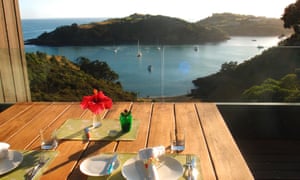
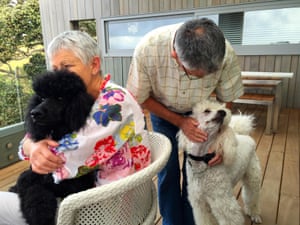
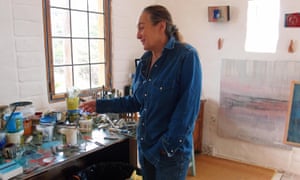
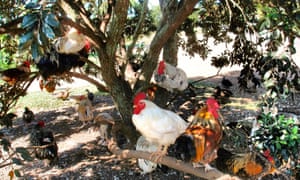
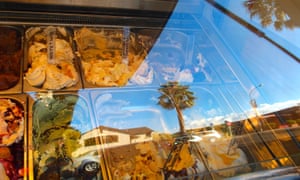
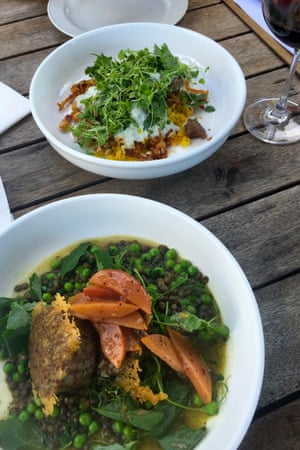
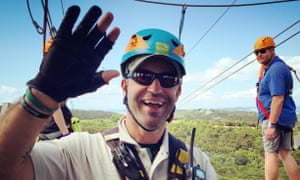

No comments:
Post a Comment